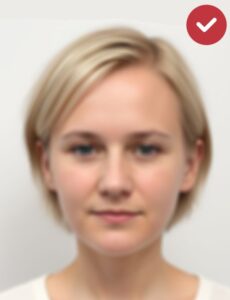Passport Photograph Guidelines
These guidelines outline the quality and technical standards for passport photos, applying to all ID photos for passports, identity cards, and permits issued by the police. The standards comply with EU laws and international agreements.
Photographers typically send passport photos electronically to the police, linking them to applications via a unique photo retrieval code. Paper photos are also accepted if submitted at a police service point. (Read more info from Police website)
NOTE
Keep your head straight, facing directly at the camera, without tilting sideways, forward, or backward.
Align your shoulders with your face, directly facing the camera—no over-the-shoulder poses.
If a medical condition prevents this posture, adjustments can be made to ensure your face is positioned correctly.
Both ears don’t need to be visible; natural variations are acceptable.
As a general rule, your entire face, especially your eyes, must be fully visible and clear.
Maintain a neutral expression with a closed mouth. These rules are relaxed for very young babies, but even they should have only a slightly open mouth.
Keep your eyes open without squinting, even for small children.
Ensure your face is unobstructed by accessories or hair, with eyes clearly visible in the photo.
Correct light, skin tones accurately, and does not have shadows.
The photo can be either black and white or in color.
Although wearing glasses is allowed for passport photos, we suggest taking them off.
A scarf is acceptable, but it must not cover the face or the entire forehead.
There must not be other people or objects in the photograph. You may support a small child, but there must not be any part of you visible in the photograph.
Colour defect

Low resolution or out of focus
The reflection on the glasses partially covers the eyes. Make sure that the frame of the glasses do not partially covers the eyes.
The shadow of the glasses partially covers the eyes.
Toy in the photo
The hair covers the ears, eyebrows and forehead
Portrait mode is unacceptable
Overexposed
Optical distortion
Smart phones and tablets typically have a wide-angle lens and the pictures are taken at a short distance. This causes an optical distortion that makes your nose and other facial features look disproportionately large in a passport photograph.
Therefore, take the picture about 40 cm from your face. We highly recommend having someone else take the photo, if possible.